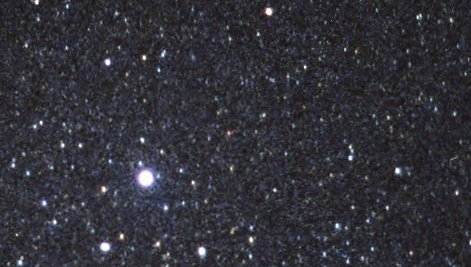
 |
The red carbon star T Lyrae glows at the center of the picture, its color contrasting strongly with those of other stars. North is to the left. The bright star to the lower left is Vega, Alpha Lyrae. EpsilonLyrae (slightly elongated horizontally because of its duplicity) is to the lower left of Vega, Zeta Lyrae to the lower right. Photo by Jim Kaler. |